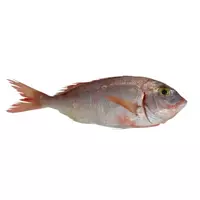Beryx fish

Deep sea fish beryx serve as an important trawl fishing site off the coasts of New Zealand and Western Australia, as well as in the Greater Australian Gulf. Despite the fact that this fish is often confused with sea bass due to its characteristic species and color, they belong not only to various families, but also to completely different orders of bony fish. Beryx fish live in bottom places at a depth of 150 meters, but from time to time rises into the water column. Like other members of this family, this species feeds mainly on plankton animals.
Beryx fish are distinguished by a tall, laterally compressed body, large eyes and a rather large inclined mouth. The head and back coloring of this fish can range from red to dark pink, with the flanks white and the abdomen and fins scarlet. By the way, after death, the body of the fish beryx acquires a rich red color. Due to the fact that the scales of this sea beauty are quite prickly, it is very difficult to pick it up and, therefore, clean it. However, all these inconveniences will immediately be forgotten once you have it ready.
The white meat of beryx fish is highly appreciated in cooking, which is distinguished by a delicate and juicy structure with an extraordinary taste and versatility in cooking. Thanks to these qualities, this seafood is one of the most valuable food fish and is perfectly suitable for all types of culinary processing. In general, like any other sea fish, it can be fried, boiled, smoked, pickled, salted, dried, but many culinary experts recognize hot smoking as the best way to prepare beryx fish.
fish berix 88 kCal
Energy value of fish beryx (Ratio of proteins, fats, carbohydrates - ju):
Proteins: 20.3 g (~ 81 kCal)
Fats: 0.8 g (~ 7 kCal)
Carbohydrates: 0 g (~ 0 kCal)
Energy ratio (b | y): 92% | 8% | 0%
 Español
Español Français
Français Português
Português Русский
Русский 简体中文
简体中文 繁體中文
繁體中文 日本語
日本語 한국어
한국어 العربية
العربية Türkçe
Türkçe Қазақ
Қазақ Deutsch
Deutsch Italiano
Italiano Українська
Українська
